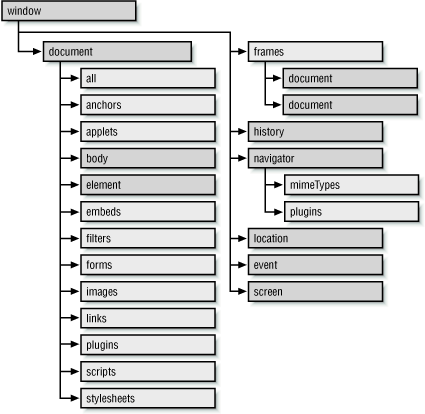Understanding the IE Object Model
Once the World Wide Web began to gain popularity, there was a great concern about preserving standards, so that the exchange of information would remain as open as possible. The Document Object Model, like HTML, is one of those standards. Basically, the Document Object Model provides a means for you to interact programmatically with the document displayed by the browser. Both Netscape Navigator and Internet Explorer have a document object model; however, there are some large differences between the two. Despite the presence of standards documents, there is always room for interpretation. (If you are interested in reading more about the Document Object Model standards, or any of the other standards that apply to the World Wide Web, see http://www.w3.org.)
We are going to take a look at the Internet Explorer Document Object Model. It is a rich environment that will allow you a measure of control over the document in the browser. Before we jump in, let’s have a quick look at the Document Object Model itself and some of its parts. These are shown in Figure 8.3.

Figure 8-3. Internet Explorer 5 Object Model
As you can see, the Window object is the parent of all of the other objects in this model. Each document will always have at least one Window object. A Window object will always have at least one Document object. Without the Document object, there ...
Get VBScript in a Nutshell now with the O’Reilly learning platform.
O’Reilly members experience books, live events, courses curated by job role, and more from O’Reilly and nearly 200 top publishers.

